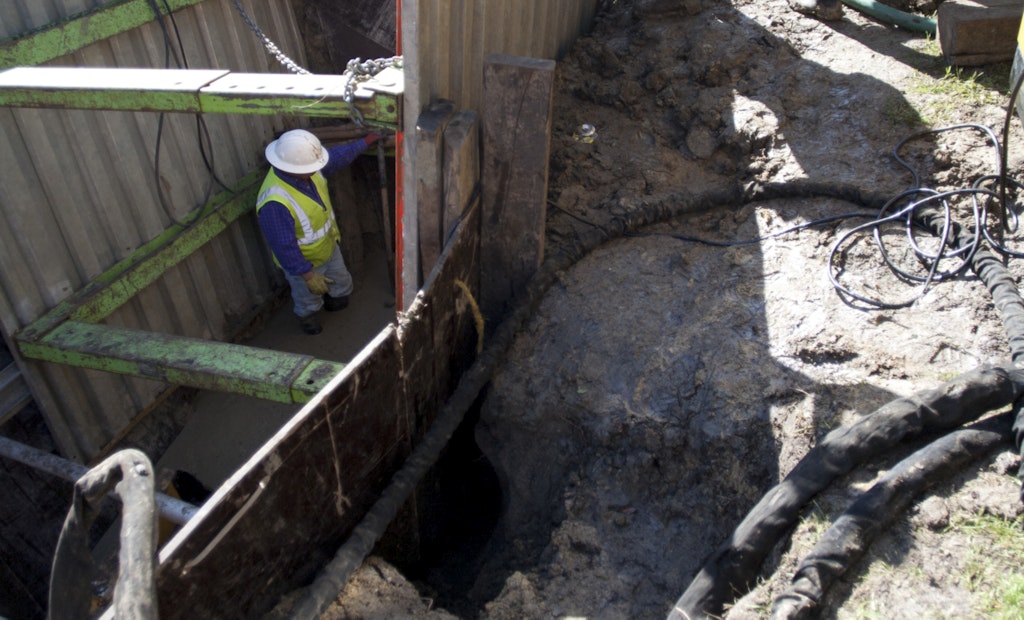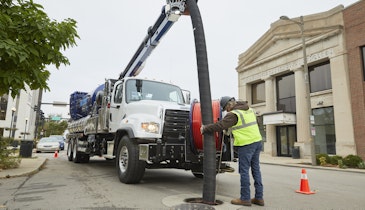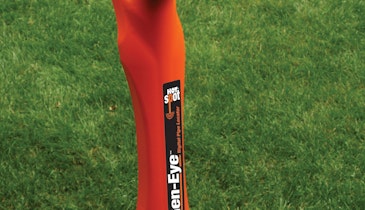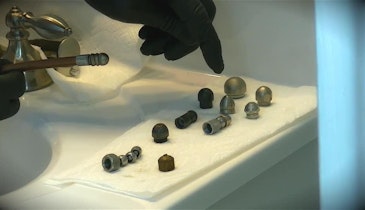Interested in Education/Training?
Get Education/Training articles, news and videos right in your inbox! Sign up now.
Education/Training + Get AlertsThe National Utility Contractors Association is holding its annual Trench Safety Stand Down this week.
Now in its fourth year, the Trench Safety Stand Down is an opportunity for companies to take time to do a toolbox talk or another safety activity that draws attention to the specific hazards related to working in and around trenches.
Companies can formally sign up as a participant through NUCA, which will email certificates of participation and publish a list of all the organizations and companies that held Trench Safety Stand Down events. Additional resources are available on NUCA’s website at www.nuca.com/tssd.
Here’s a refresher on some trench safety items per the General Requirements Section of OSHA’s Subpart P. As with any OSHA Standard or other safety procedure, it is important to remember that these are the minimum requirements to ensure safe job sites.
1. Surface encumbrances
To ensure stability and integrity, they need to be removed or supported while an excavation is open. Examples include rocks, trees, telephone and utility poles, fire hydrants, etc.
2. Underground installations
Examples include gas, electrical, water, sewer lines, etc. They must be:
- Located and marked before beginning work. Property owners and/or utility companies should be notified at least 24 hours prior to digging, unless a longer time is required by local law. Some states require 72 hours' advance notice. Most other states require 48 hours' notice.
- Protected, supported or removed while the trench is open.
Most states have so-called 811 one-call laws. Simply dial 811 to contact the one-call center in your state.
3. Access and egress
These are fancy words for entering and exiting a trench. The requirements are:
- In trenches that are 4 feet or more in depth, provide a means of access and egress.
- Spacing between ladders, stairs or ramps should not be more than 50 feet.
- No worker should have to travel more than 25 feet laterally to reach a means of egress (exit).
- Ladders must be secured and extend 36 inches above the landing.
In addition, it is important to use wood or fiberglass ladders where there is a possibility of electric shock. Many utility companies and contractors always use wood or fiberglass ladders to ensure there is never a problem.
A “competent person” must design all structural ramps used solely by employees. Further, a competent person qualified in structural design must design all structural ramps used for equipment. Usually this person will be a registered professional engineer.
Finally, the components used in structural ramps must be connected, be of uniform thickness, be constructed so that cleats and other connectors do not create a tripping hazard, and if ramps are used instead of steps, they must be provided with cleats or other surface treatments to prevent slipping.
4. Exposure to vehicular traffic
Employees must be protected from being struck by motor vehicles. Also, employees must be provided with — and must wear — warning vests or other highly visible garments when exposed to traffic. Generally, employees are considered “exposed” when they are within the right-of-way. Signs, signals, barricades or flagmen may be required.
5. Exposure to falling loads
The law is simple. The objective is to protect employees from being struck by falling objects:
- Employees are not permitted underneath raised loads.
- Employees are required to stand away from equipment that is being loaded or unloaded.
- Equipment operators or truck drivers may stay in equipment if it is properly equipped with a cab shield or adequate canopy.
6. Warning system for mobile equipment
Preventing vehicles from falling or backing into a trench can be accomplished by providing:
- Barricades
- Hand or mechanical signals
- Stop logs
- Grading away from the excavation.
Equipment with an obstructed view is required to have working backup alarms or observers must be assigned when backing up. Suggestion: Caution your employees not to be complacent around backup alarms. On some projects, there are so many backup alarms that employees start to ignore them.
7. Hazardous atmospheres
One of the competent person’s responsibilities is to prevent employees from being exposed to hazardous atmospheres or dangerous environments.
- Oxygen-deficient atmosphere — Normal air is 20.9% oxygen. An oxygen-deficient atmosphere has less than 19.5% oxygen.
- Oxygen-enriched atmosphere — It has 23.5% or more oxygen.
- Carbon monoxide causes oxygen starvation and can be fatal at a concentration of just 1% for one minute.
- Hydrogen sulfide is a very common toxic gas, and methane is a very common flammable gas. Both are regularly found in underground construction, particularly around sewers.
If there is a possibility that a hazardous atmosphere exists or could reasonably be expected to exist, the air should be tested before employees enter a trench or manhole. Provide respirators or ventilation when needed. And retest the air continuously to ensure that the trench remains safe.
8. Emergency rescue equipment
Such equipment must be available when a hazardous atmosphere exists or could reasonably be expected to exist. Employees entering confined spaces must be properly trained. Harnesses and lifelines are required whenever employees enter bell-bottom pier holes and other deep confined spaces. Lifelines must be attended at all times.
9. Water accumulation
Water must be controlled to prevent cave-ins. Methods for controlling water vary with each situation. Employees are not permitted to work in trenches where accumulation exists unless:
- Special support systems or shields are used to protect employees from cave-ins.
- Water removal equipment is used and monitored by the competent person to prevent water accumulation.
- Safety harnesses and lifelines are used to protect employees.
Surface water must be diverted or controlled. The competent person must inspect the trench after each rainstorm.
10. Stability of adjacent structures
The objective is to protect employees from cave-ins.
A support system, such as shoring, bracing or underpinning, must be used to support structures that may be unstable due to excavation operations.
Excavating below the base or footing of a foundation or wall is not permitted unless:
- A support system is provided to ensure the stability of the structure.
- The excavation is in stable rock (which is very rare).
- The operation is approved by a registered professional engineer.
Support systems must be provided for sidewalks, pavements and other structures that may be affected by excavation operations.
11. Protection of employees from loose rock or soil
Employees must be protected from being struck by soil or rocks that are falling or rolling from the edge and face of a trench. Spoils and equipment must be set back at least 2 feet from the edge of a trench.
12. Fall protection
It is required that walkways and bridges be provided over trenches that are least 6 feet above lower levels and are greater than 30 inches wide. Bridges and walkways must be equipped with standard guardrails and toe boards. Additional fall protection may also be required.
13. Remotely located excavations
Examples are wells, pits, shafts, trenches, other excavations, etc. They must be backfilled, covered or barricaded.
14. Inspections
A competent person must make all inspections.






